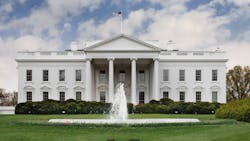White House announces global water security plan
On June 1, U.S. Vice President Kamala Harris announced the launch of a White House Action Plan on Global Water Security. The plan outlines the executive branch’s approach to advancing water security both in the U.S. and abroad.
More than two billion people today lack access to safely managed drinking water, and nearly half the world’s population lacks access to safely managed sanitation services. An accelerating climate crisis will increase pressure on water resources during this decade, and half the world’s population is expected to face severe water stress by 2030. Water insecurity threatens lives and livelihoods and can lead to popular unrest and population movements.
The White House says that the plan will harness the resources of the U.S. Government to advance global water security and foreign policy goals.
The Action Plan is, in part, a response to the White house Action Plan on Global Security: it emphasizes water security as an essential part of the global efforts for national security. These objectives include increasing economic growth; decreasing vulnerability to instability; building resilient societies; bolstering health and food security; advancing equity and equality; and tackling climate change.
The plan is organized around three pillars:
- Help achieve universal and equitable access to affordable, sustainable, and climate-resilient water, sanitation, and hygiene (WASH) services without increasing greenhouse gas emissions.
- Promote the sustainable management of water resource and their associated ecosystems to support economic growth, build resilience, and increase cooperation.
- Ensure that actions promote international cooperation and water security.
The plan provides in-depth lists of actions that could support each pillar. It also provides snapshots of water security in several regions across the globe, including current resource management, current infrastructure, political dynamics, and other key regional issues.
Through this Action Plan, the government plans highlight, reinforce, or reorient existing federal tools to advance its water security goals. The process emphasizes the use of data in decision-making while breaking down barriers to collaboration.
The White House says that the government will also increase its focus on working in partnership with nongovernmental organizations, local communities, and the private sector in order to maximize the impact of its work.
About the Author
Jeremy Wolfe
Jeremy Wolfe is a former Editor for WaterWorld magazine.

